Rega Planar 10: The Turntable That Gets Out of the Way of Your Music

“The most important change I noticed was the fact that I was in a record store an hour after getting it, digging for new music. I was all the sudden worried about running out” - Michael Horne
Why the Rega Planar 10 Caught My Attention
Like many of you, I listen to music every chance I get; it's always on somewhere. I know if you are reading this, I'm preaching to the choir here. But when I want to listen to records, I don’t want to fidget with cartridges any more than I need to. Nor all the different settings and adjustments involved. Most recently in my audio journey, I no longer want to decide whether or not to use my subs. I want them in the system, period. (We can talk about that another time). Finding a turntable in this wheelhouse is easy; finding a true HiFi turntable that performs at a high level, is easy to set up, and has your subs rocking the house? That's a little tougher.
The Listening Experience: Music Without the Hassle
I, like most of us, listen to music all week digitally and have very little time to sit and listen to vinyl. It's my second favorite way to listen (My favorite is still in the car). When I have time, it’s to listen to a specific album or set of music. Something I want to take in, and really listen to the music, not the table or any other gear for that matter. It's the escape, the culmination of culling through all the digital and streaming files for the music that is worth the money and effort to hear right, when you have the time.
What I don't want is another project or to listen to the same record over and over, comparing subtle differences in carts and changing out phono cables, endlessly tweaking the settings and measures. I want a simple, solid analog chain that starts with the table. I wanted a table I could flip on the phono stage, turn on the 33.3, and roll (subs included).
What Sets the Rega Planar 10 Apart?
These are some of the things that brought me to the Planar 10. The sheer amount of thought and engineering that has gone into this table is impressive. The P10 needs no help; it's not about endless tweaks and adjustments. That's all been worked out in design. And after I’ve listened to numerous records with this table, I grow more confident in what I'm hearing; this is music, and that's it. I'm not listening to the table, music being played on an instrument that comes in the form of a stunning turntable. One that gets out of the way of your music and assures you that you're not missing anything. And I like gear that gives me confidence, and gets me listening to music more than asking questions about my setup.
What the P10 is not—a traditional table in any way. You know the tables that are all about mass loading and weight and come with mixing instructions for concrete, vacuums, or something you have to build on top of the foundation of Mt. Dune. The P10 is light and rigid by design, not accidentally. It's to take less of the room into the equation. You often hear the saying with headphones, “They take the room out of the equation." Plug it in and let it play. Once set up, you're done until you've ground down your stylus and need to replace it, or you've run out of records. Don't run out of records.
Let's talk more about what this spaceship of a design is all about. Hint, it's music.
Why the P10 In the Ocean of Options
I'm going to talk about setup, cart, and vibration control. This is always a hot-button topic with Rega. But hopefully I can shed some light. My approach was simple: read the opinions in the forum, stop after it devolved into chaos two posts in, repeat. There are some good reviews out there, but overall, you really have to nix all that and focus on the design. After all, there is so much more information out there regarding the entire design concept, and the P10 is the culmination of years and years of perfecting the implementation of that philosophy in countless turntables.
The Rega design philosophy is all about rigidity and light weight to address the same issues that other designers combat with density and weight traditionally, or mass loading. This comes into play in a few places with the RP10 that should be considered and at least discussed.
Key Features of the Rega Planar 10
- Ultra-Lightweight & Rigid Plinth – Features Rega’s advanced skeletal design, reinforced with a ceramic top brace, providing exceptional rigidity while minimizing unwanted vibrations.
- RB3000 Tonearm – Precision-engineered and mounted directly to the plinth for optimal performance.
- 24V Low-Noise Motor Assembly – Works in conjunction with EBLT drive belts and a hub bearing assembly to ensure smooth, consistent speed.
- Ceramic Platter – High-mass, ultra-precise diamond-cut platter for exceptional speed, stability, and accuracy. Flywheel effect. This is produced by compressing ceramic oxide powder at an extremely high pressure, firing to stabilize and harden, and having the diamond cut for precision and to ensure the platter has an even weight distribution. This helps in creating a “flywheel effect.”.
- PL10 Outboard Power Supply – Individually hand-tuned for each turntable, providing ultra-stable power delivery.
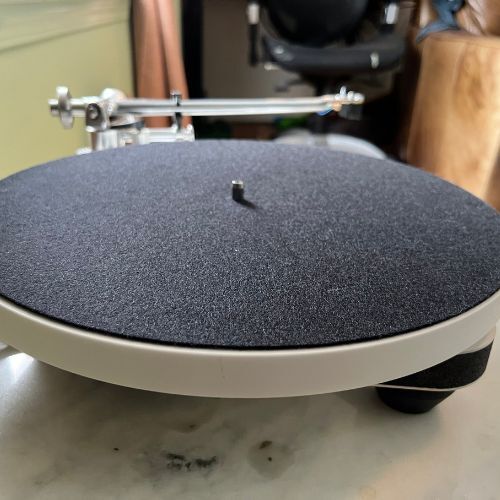
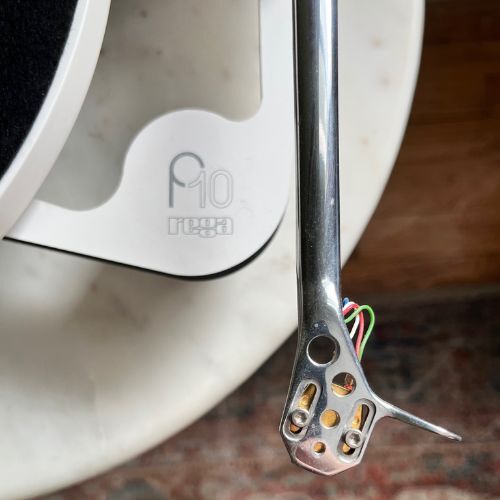
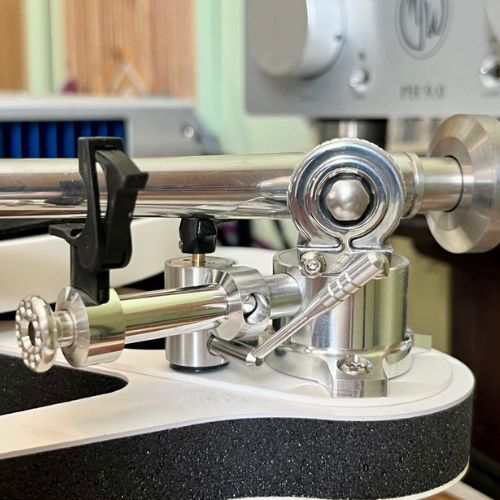
Setup & Ease of Use
The out-of-the-box setup is simple, and I would advise you not to make it complicated. Trust me on this. Use the manual and don't try to get intuitive because it's simpler than you think or have even read. Use the protractor provided to make sure nothing shifted on the pre-mounted cart or to set up a new cart if you already had one waiting. (more on that below). The P10 has a gorgeous white ceramic platter that slides easily into the motor housing, but I would make sure your hands are clean or wear gloves when initially placing it in.
Once you find its home, just place the actual table, set the platter in place, check the cart alignment and tracking force per your cartridge or premount instructions, connect the fixed cables to your phono stage, and you are ready to get spinning.
Setting up the P10 is refreshingly simple. Just follow these steps:
- Unbox the turntable and carefully remove all components.
- Use the provided protractor to check that the cartridge alignment hasn’t shifted.
- Handle the ceramic platter with clean hands (or gloves) before placing it onto the motor housing.
- Position the turntable on a level surface—avoid overcomplicating placement.
- Check the tracking force and anti-skate settings based on your cartridge or pre-mounted recommendations.
- Connect the fixed cables to your phono stage.
- Press play and enjoy!
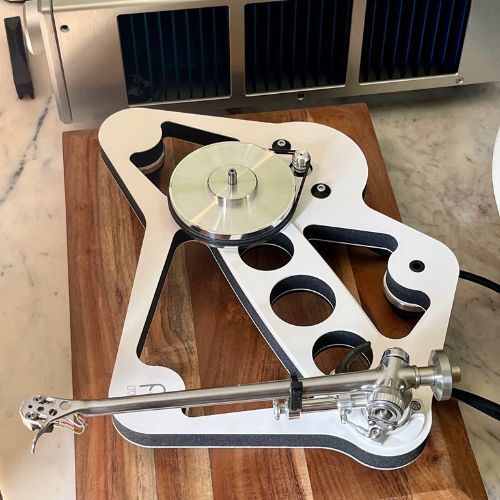
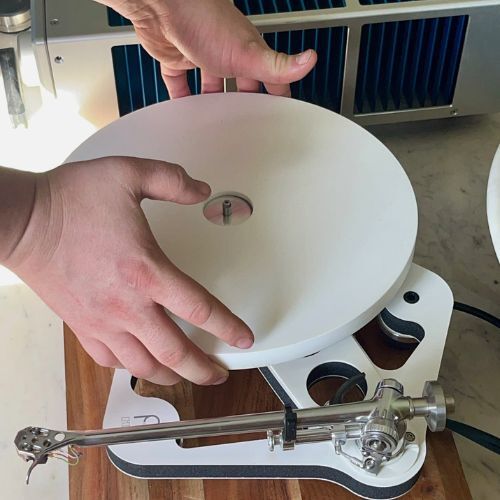
Vibration Control and Placement: Keep It Simple
Don't overthink it. You will be better served by putting the P10 on a normal level surface than getting exotic feet to put underneath. Rega thought of that too. Remember, rigidity, light weight—take the room out of the equation. That's the mantra, so when you add to that and try to couple to a surface that is coupled to the room, you are going backwards against the design philosophy.
To test this theory, I put the P10 on a simple 1 ¼” surface. Then, it was tested on several different surfaces and also using the IsoAcoustics Orea feet. I started with the highest weight capacity, Orea, and worked down just to see what effect they had. The more artificial support I gave the table, the more the records sounded. It seemed that life was gone. You could hear loud sweeps and slams, but overall, it was hollow in a way, almost like the music was in another closed room, but not in the room.
Now switching back to the plain, without feet of 1 ¼” wood surface. Now it sounded right. Everything was full, quiet, and resolved. Even with my dual subs rolling. All that to say, keep it simple. It doesn't need or want a 600-pound slab of marble sitting on a stack of pillows.
Best Practices for P10 Placement:
- Use a simple, level surface. No need for fancy isolation feet or custom platforms.
- Avoid coupling the turntable to the room with heavy materials that may introduce unwanted resonance.
- Rega’s design philosophy minimizes room interaction, so over-engineering placement may actually degrade performance.
- Tested results show that adding additional vibration isolation (like IsoAcoustics Orea feet) can strip away some of the natural liveliness of the music.
RB3000 Tonearm: Precision Engineering
The tonearm is gorgeous to behold with its polished aluminum finish. It's just as impressively designed as the table itself. Again, it goes back to rigidity and keeps it lightweight. In the name of shedding weight, all the parts of the arm are engineered with such low tolerances that each RB3000 Tonearm is produced using no adhesives, screws, or additional hardware. This requires that each piece is manufactured within a 1000th of a mm of what the design allows for.
The tone arm comes with affixed RCA Cables, so they cannot be changed out. Like all Rega tables there is no ground wire, as this is achieved through the left channel of the cable. It is hard to argue with the results; they are well designed, and I would not see a reason to replace them.
RB3000 Tonearm Highlights:
- No adhesives, screws, or extra hardware – Precision-built to within a thousandth of a millimeter tolerance.
- Integrated RCA cables – Non-replaceable, but designed for perfect synergy with the tonearm.
- No separate ground wire – Grounding is achieved through the left channel cable.
- Ultra-lightweight yet rigid – Reduces unwanted resonance while maximizing tracking accuracy.
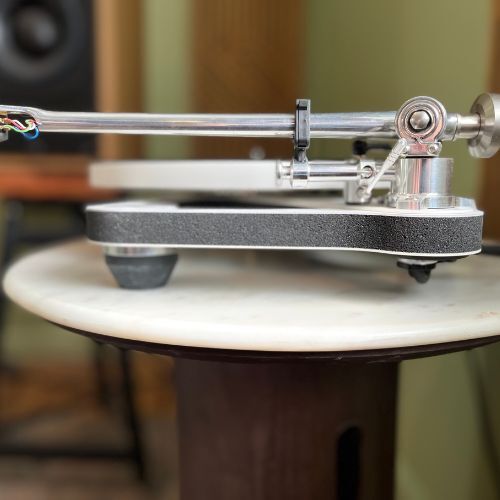
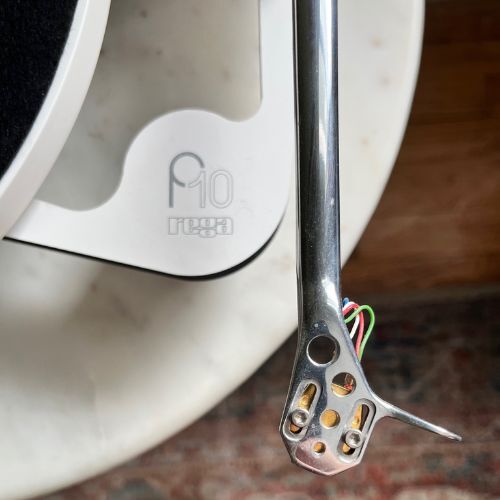
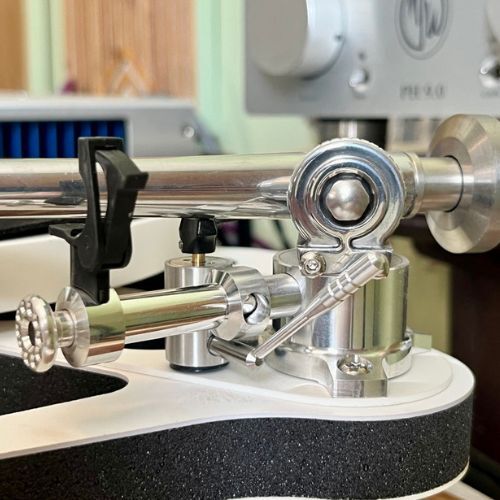
Rega and Cartridges: What You Need to Know
There has been much said over time about Rega carts, and opinions good and bad, and what other carts can be used on their tables. I want to address the backside of that issue. What other carts can be used, and answer the question, “What's the big issue with other carts and Rega?”
The issue tends to arise from a couple of places. Most carts out there being sold or at least advertised tend to have a two-point mounting setup, and the Rega tonearms use a three-point system. This is coupled with the low mass of the tonearm and the fact that, by design, there is no vertical tracking adjustment. The common thinking is that you are somewhat limited in what cartridges can be used. This is true to a point, but not nearly as much as the forums and opinions out there would have you believe. A lot of the debate stems from the fact that Rega has stated that the tracking angle doesn't matter. Let's leave the depths of that topic alone for the time, but do a quick test to at least get an idea of how much this matters in practice.
To test this theory, I replaced the Apheta 3 cart on my table with the Hana ML MC Cartridge. Here are some specifications on each for reference:
Hana ML Low-Output MC Cartridge
- 16.3 MM from tip to top of cart.
- 9.5 Grams with a recommended tracking force of 2 grams.
- 14MM from tip to top of cart.
- 6 Grams with a recommended tracking force of 2 Grams.
Without getting too deep, on the face, they are similar for mounting purposes. Both within adjustable parameters on the weight, but the Hana would generally want to sit a little higher, as they tend to like a 20-degree tracking angle.
I used just the provided protractor for mounting and the two-point mounting screws to mount the Hana. I also went back to scratch and adjusted the tracking force and anti-skate the exact same way as recommended in the manual for the pre-mounted Rega Apheta 3.
If you want to adjust for the height, you can add in a spacer by removing the arm and then reinstalling on top to adjust the VTA. In this case, to test the theory, I did not. As I mentioned, Rega has stated that the tracking angle doesn't matter. They offer a 2mm shim to place under the tonearm if you need to make that adjustment, although it is meant to adjust the VTA by bringing up the rear of the cart rather than the overall height.
Rega states that the coupling of the arm to the mounting board is more important, which can be compromised by adding a spacer to adjust the VTA:
"Arm height or V.T.A adjustment can be a controversial subject. Rega believes that the integrity of the arm fixing onto the arm mounting board is much more important than the questionable facility of arm adjustment. The arm should be reasonably parallel to the record surface or slightly lower at the mounting. The only time a spacer is necessary to raise the arm height is if the rear of a cartridge is hitting the record whilst playing."
The results with the Hana are incredible without the spacer. I won't get into which cart sounds better here. What I will say is that the Hana performs incredibly well, sonically, tracking, it's nimble, and best of all, I had it installed and lined up in less than 10 minutes.
Not every cart will work. Some of you have large collections of carts, and even multiple tables. If there can only be one table and you like to tinker with carts, cables, and tonearms, the P10 may not be for you. And no doubt in my mind that there are more carts out there that won’t than will. However, the choices are much broader than typically thought. Here are a few cartridge brands, in just brief research, that will work with ease:
- Goldring
- Hana
- Dynavektor.
The point being, there are options out there that will work; you would just need to keep a few factors in mind. If you can keep the weight of the cartridge down, the height can be adjusted if needed.
Cartridge Compatibility with Rega P10:
- No vertical tracking adjustment (VTA) – Some third-party cartridges may require shims.
- Rega prefers two-point mounting – Unlike many brands that use three-point mounting.
- Lighter cartridges perform best – Keeping mass low aligns with Rega’s design philosophy.
- Compatible cartridge brands:
- Goldring
- Hana
- Dynavector
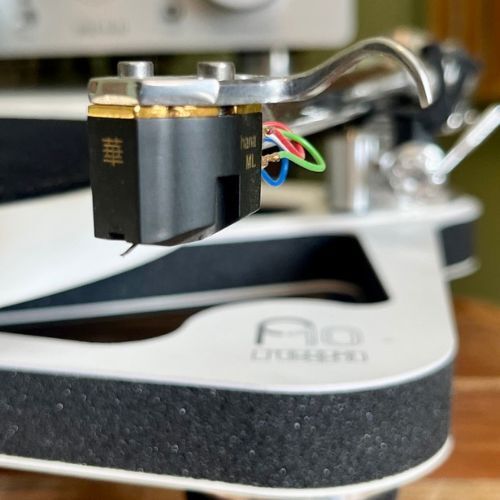
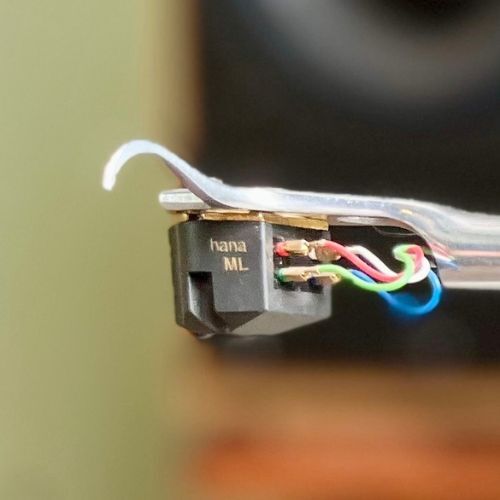
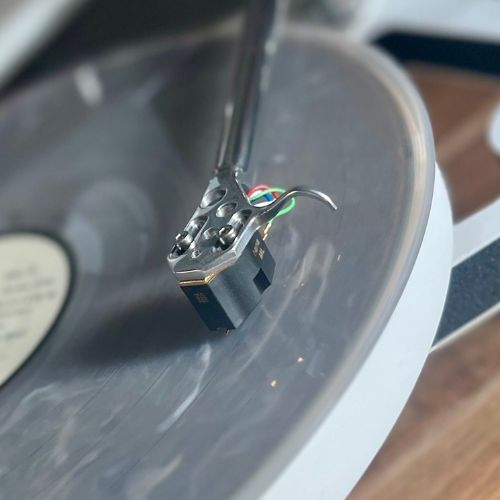
Power Supply: Precision Speed and Stability
The last point to bring up about this table is that it is incredibly important, as it has been a pain point for countless other analog guys and me in other years– the power supply. There is nothing more frustrating than a turntable that can't keep time. It’s job #1. The table needs to turn, and in time, all the time. I say this because when it doesn't, you start chasing the issues. Is it the power supply? Is it the Motor?
Rega has fixed this issue upfront. The supplied power supply is not off the shelf. Like every other piece on the p10, it is also hand assembled and tuned for your turntable, and I mean your serial number, your exact table. I like the ease of use in switching from 33 to 45 rpm speeds, and the fact that it has a 24v hi torque motor that it's supplying, rather than the all too common 12v motors out there.
All this gives me confidence that I'm rolling at a consistent 33.3 all the time. Timing is everything. When a table runs slow, or fast it affects everything up the chain, just awful results. Even when it's off by a bit, you will notice it doesn't sound right, frequencies are off, bass hits sluggish, the highs don't reach quite as high, and seem lower in register, but you can't quite put your finger on it. Until the problem gets worse or you adjust the speed 100 times only for it to appear again a few seconds later. Having issues in the past, I'm particularly alert to timing issues; however, that is slowly falling off my immediate radar as the P10 delivers record after record after record.
P10 Power Supply Advantages:
- Hand-assembled and tuned to match each specific turntable.
- Ensures consistent 33.3 and 45 RPM speeds with zero pitch variation.
- Eliminates the need for external speed calibration—timing is locked in from the factory, but can be adjusted.
- Runs a 24V high-torque motor, unlike many turntables that use 12V motors.
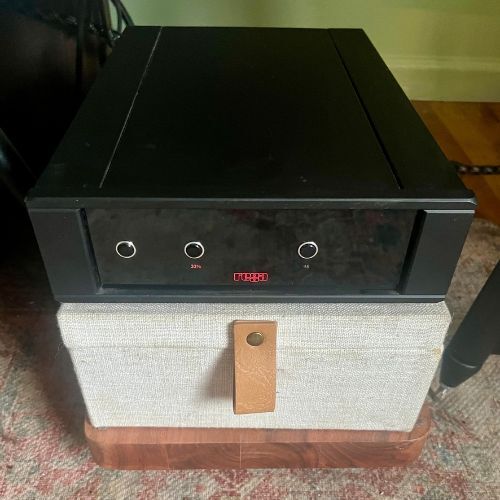
Phono Stages: Finding The Right Match For The P10
I utilized the Rega both with a Chord Symphonic phono preamp and mostly the Modwright PH 9.0X. This table speaks only the truth, so I would say the phono stage preference really comes down to your personal taste and budget. Meaning, the better the phono stage, the more it will help your cart translate the abundance of analog information as this table allows. It will also showcase the shockingly low amount of vibration and external forces at play that fail to come through the table.
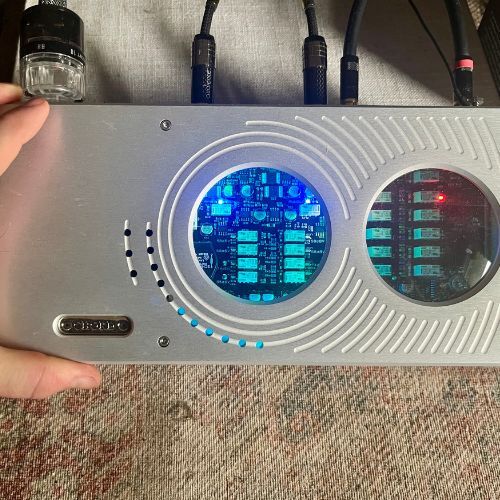
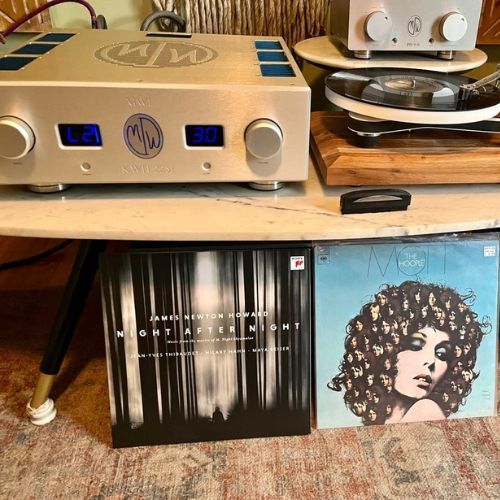
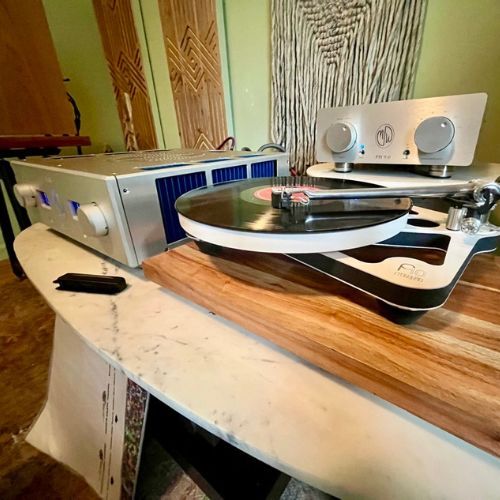
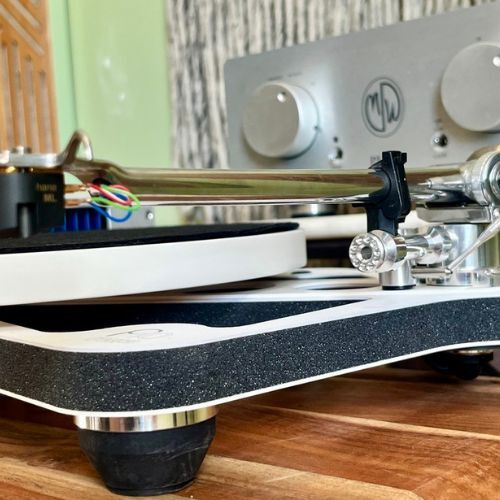
All that to say, if you are not someone who changes out carts often, your choices are wide open. If you like to change carts, I would recommend something like the PH 9.0X from Modwright or the Parasound JC3+, which makes it easy to change the impedance settings. I tend to lean towards a tube phono stage, and the Rega supplied everything my PH 9 could ever want in the way of a quiet, accurate timing, complete signal in spades.
TMR recommended phono stages for Rega Planar 10 Turntable:
For flexibility:
- Modwright PH 9.0X - Offers tube warmth and detailed sound.
- Parasound JC3+ - Features easily adjustable impedance settings.
- Rega Aura Reference - Synergy with Rega cartridges and features heavy
For plug and play:
- Rega Aria Mk3 - On-the-fly impedance change
- Gold Note PH-10 - Very natural sound and feature-heavy, easy access to adjustments.s
- Mola Mola Lupe - Incredibly resolving sound and feature-heavy, remote.
Listening Impressions: What It Will Do For You
I’ll tell you up front, this turntable is great in so many ways. The most important change I noticed was the fact that I was in a record store an hour after getting it, digging for new music. I was all of a sudden worried about running out. Like a prepper stocking up for the end, I was suddenly afraid I would not have enough music to last to the end of my enthralment with my new turntable. Six months later, as of writing this, and that has not changed.
When I was a kid, I listened to “The Color And the Shape” from the Foo Fighters, Third Eye Blind’s “Blue”, or something like Manchester Orchestra’s “Black Mile to the Surface”, not records people thought of as “audiophile”. There was an energy there even on those stock car speakers, a ferociousness that you just knew was going to be there live. Or think to yourself, “if you could ever afford to play these on a nice turntable and stereo, I bet it sounds ferocious, just huge, like the massive studio spaces they were recorded in”, I just knew the information was there.
So I asked my pops to play Foo Fighters on ye old family stereo, which was really just his. Dad said no, and I spent all my money on guitar pedals and cigarettes. But now, we are 20 years down the road, and I don't smoke, so I can afford a nicer table and satisfy my childhood curiosity.
The first complete catalogue I burned through was all my Manchester Orchestra records. The P10 unleashes Andy Hull and company in a way I've not heard, and I've seen them live. When listening to the album from Manchester called “Black Mile To The Surface, the recording sounded enormous, the walls were so far away. I found out that when you finally hear his voice come back into the microphone, the delay was caused by the natural echo in the room. This is most evident in the second-to-last track, “The Parts”. The final track, “The Silence,” is the most ferociously incredible ending to an album, ever! The drums were just building, and you knew it was about to bring the walls down…. But anyways, the table ... back to the table.
It's not all about reliving the ’90s here. Recordings like Joe Walsh’s “But Seriously Folks”, Prince Sign ‘O’ The Times, and Bowie's entire Berlin Catalogue (Heroes, Low, and Lodger), are my recent go-to records, when evaluating a change to my phone setup. Everyone has their thing, but these are good recordings, easy to find good pressings of, and just stellar music. The P10 did not disappoint. In fact, I can honestly say, I don't know that I've heard some of these records sound as dynamic, detailed, and spacious before, and a few of these I've had for over 20 years.
For example, on “But Seriously Folks”, Joe Walsh displays a large bandwidth for creating soundscapes rather than just songs, using anything from dead quiet space to putting you in a massive room with incredible instrumentation, particularly slide guitar and drums on this record. Employing some outstanding good ole 70’s layering techniques to help bring details together to create broader strokes, sometimes the incredible sum of the recording can get lost with certain systems, or spinning on a lesser table. With the P10, details were not only there, but instruments can be identified and placed in the soundstage while still maintaining their place in the overall sound.
The P10 has the ability to get down to business by getting out of the way; there is no stone left unturned as far as details, and all the space in the world left in the air, where there is space in the recording itself. That doesn't sound like much, but it's a lofty goal that too many turntables out there fall short of.
What the P10 Brings to the Table:
- Expansive soundstage – Records sound open, dynamic, and immersive.
- Deep bass response – Subwoofers integrate effortlessly without muddying the sound.
- Precision in high frequencies – Details like reverb trails and vocal nuances come through clearly.
- Eliminates mechanical distractions – Music takes center stage, without turntable coloration.
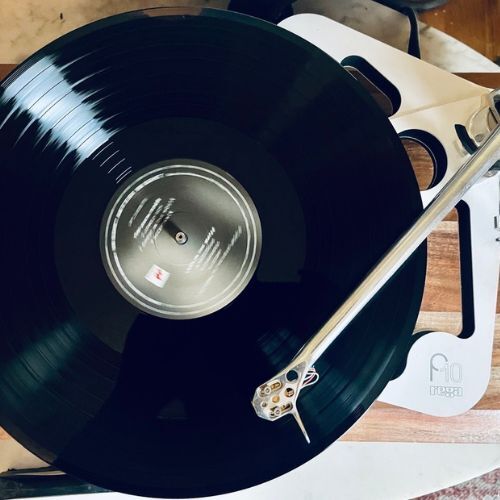
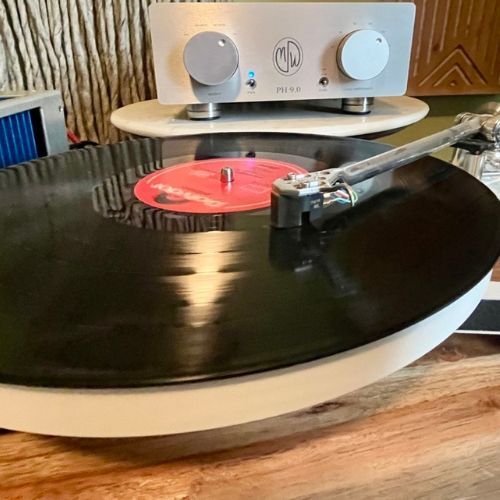
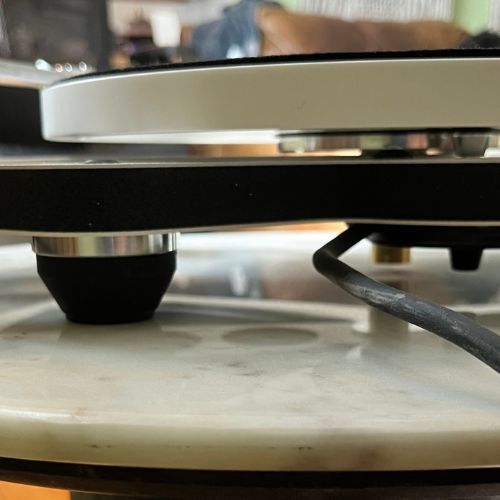
Final Thoughts: Why the Rega Planar 10 Stands Out
The point is the table. The Planar 10 does that for me; I honestly get more into music than I have in a long time. And it's the table that lets me spend the precious few extra hours I have to dedicate to music at this place in my life, spinning vinyl. That time, when there was no screen, no phone, no computer, no distractions in the room. I need that, I'm a middle-aged dude with shit to do and really can't go to a show, and I hurt. Everything hurts when you get older. I'm getting old. Anyways, the table…..Back to the table.
No endless tweaks and carts, and tools, and etc, more money for records. No endless forum arguments about a micrometer adjustment that makes all the difference in the world. You know the good ole “spend $400 more, and it will change your whole perspective on Music” tinker-phile accessory.
The P10 has already established itself in the turntable world and will, for some time, continue the trend of winning people to the Rega philosophy.
For me, it's all about the time. It's rare to have something that you use to take up your time, that gives you time back. But for those of you who have doddled in the turntable world for any time, you get that. And for those of you who have not, welcome. I highly advise looking into a Rega. The P10’s performance is a masterclass in engineering. Even if the price does not work for you, the overall philosophy goes all the way through the veins of all their table designs, so there are plenty of other options.
However, the P10 will be my choice for spinning the black circle for some time to come. You should buy a Rega, and some, and a fresh copy of the Color and The Shape, get pumped, and get loud.
Why the Rega P10 Stands Out:
- Effortless performance – No need for constant tweaks and adjustments.
- Time-efficient listening – Lets you enjoy records without setup anxiety.
- True to Rega’s philosophy – Lightweight, rigid, and designed purely for musical enjoyment.
- Perfect for audiophiles who value music over tinkering – If you want to swap cartridges daily, this may not be the table for you.
Rega Planar 10 Turntable & PSU Dimensions
Turntable (with dust cover fitted):
- Metric: 420 x 115 x 350 mm
- US: 16.5” x 4.5” x 13.8”
P10 Power Supply (PSU):
- Metric: 218 x 80 x 320 mm
- US: 8.6” x 3.1” x 12.6”
Turntable Weight:
-
4.7 kg (10.4 lbs) / P10 PSU: 3 kg (6.6 lbs)
Favorite Albums Spun on the Rega Planar 10
Below are some albums that really showcase the P10’s performance.
Foo Fighters - Color and the Shape (1997)
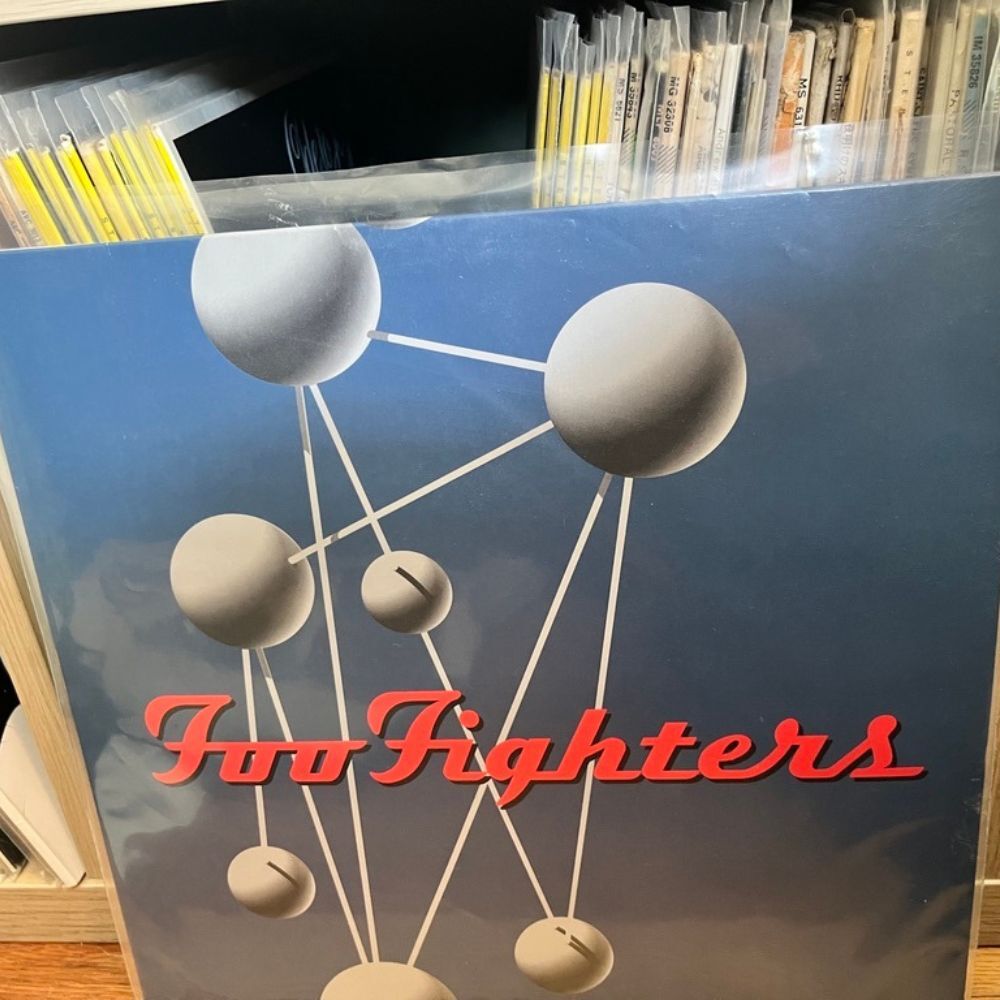
Joni Mitchell - Hejir (1976)
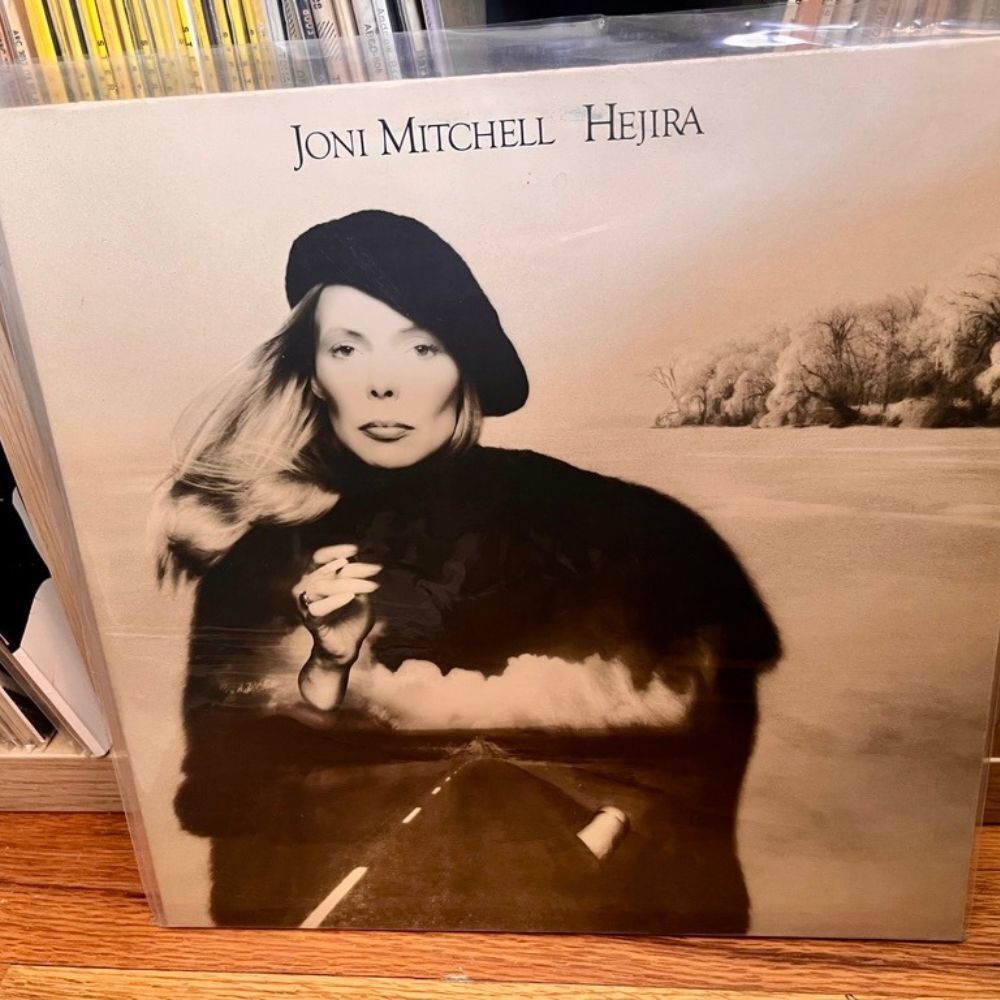
The Last Emperor of China -Ryuichi Sakamoto featuring David Byrne (1987)

Audio Vertigo - Elbow (2024)
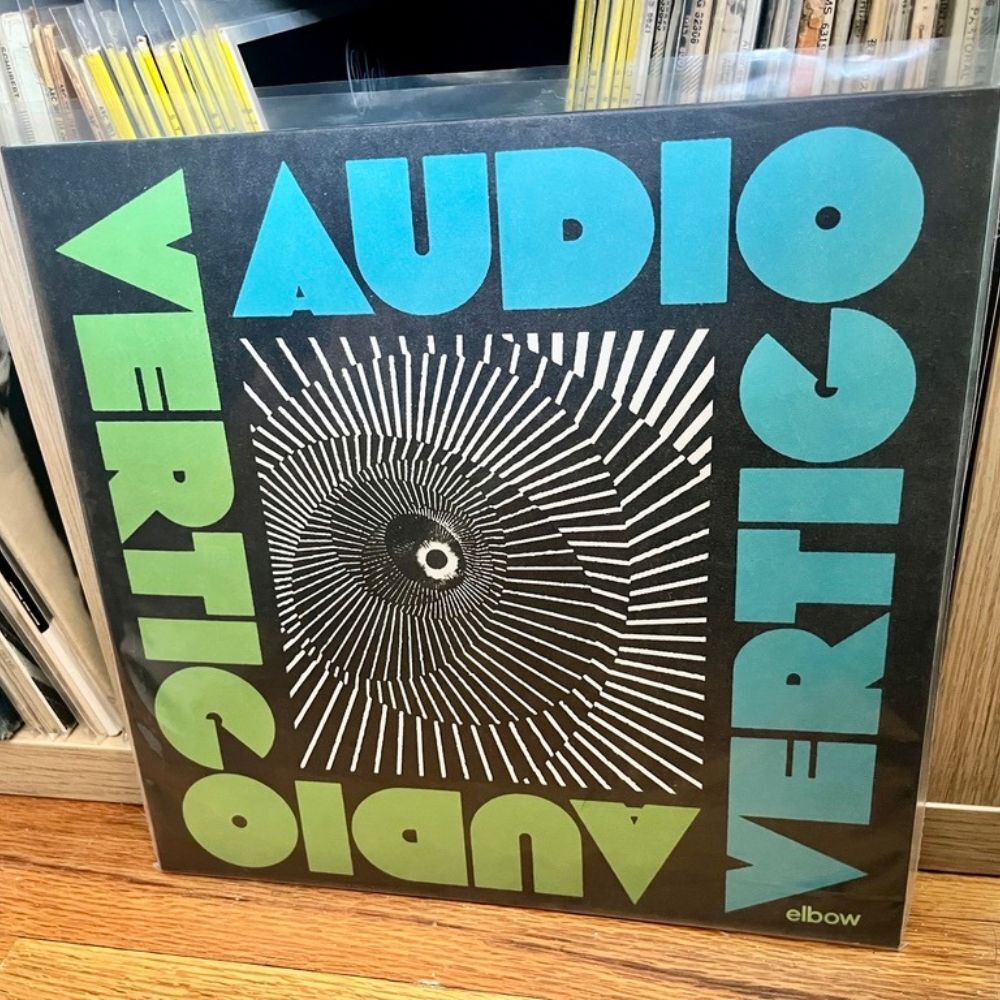
The Royal Philharmonic - Berlioz Symphonie Fantastique - Chesky Records (1986)
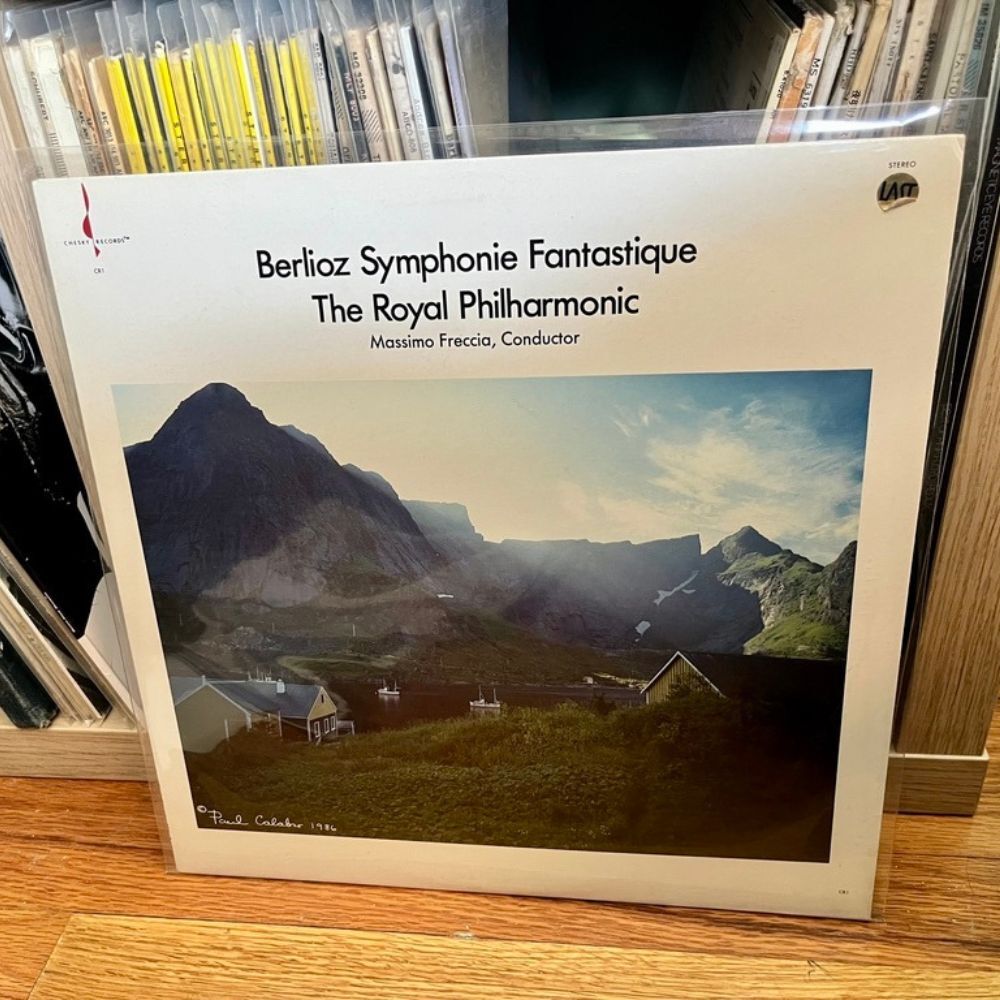
Frequently Asked Questions About the Rega Planar 10
What makes the Rega Planar 10 different from other turntables?
The P10 is engineered with Rega’s ultra-lightweight and rigid design philosophy, unlike traditional mass-loaded turntables. Its precise tonearm, ceramic platter, and custom-matched power supply deliver superior performance with minimal setup and maintenance.
Can I use third-party cartridges with the Rega P10?
Yes, but compatibility depends on cartridge weight and height. Some recommended third-party cartridges include Goldring, Hana, and Dynavector.
Does the Rega Planar 10 require a special platform or isolation feet?
No, Rega designs their turntables to work best on a simple, level surface. Adding isolation feet or heavy platforms may negatively impact performance.
Hear More. Learn More. Love Your System More.
Join thousands of music lovers who get weekly guides, expert insights, and exclusive offers from The Music Room.
